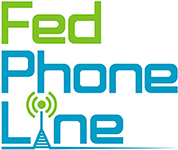NOTE: This is a personal blog, any views or opinions represented in this blog belong solely to the FedPhoneLine staff. WE ARE NOT Psychologists or Therapy Professionals, all data and information on these blogs are for informational purposes ONLY.
The term “Trap Line” is an old school jail term which used to mean a secret phone line that the inmate had which they could make calls on that were not monitored by law enforcement.
Nowadays the term “Trap Line” means a phone number that an inmate uses while in jail which can receive collect calls or trap calls.
What is a Collect Call?
According to Stats Canada, nearly 85% of Canadian households with a respondent under 30 years old reported they had a cellphone and no landline in 2019.
The problem with cellphones is that they do not allow collect calls from payphones, so if you wanted to setup a trap line from jail to make a trap call, you can’t because the cellphone receiving the trap call would be rejected because it is a collect call.
How to Receive Trap Calls in Jail
There is an easy way to set up a trap line in jail and start receiving collect calls to cellphone from jails in Canada.
The simplest way is to set up a trap line using FedPhoneLine. When you register with FedPhoneLine you are provided a phone number that is capable of receiving trap calls or collect calls from jail. You would provide the inmate with the FedPhoneLine number. The inmate then makes a collect call to the trap line or the FedPhoneLine number and the FedPhoneLine number calls your cellphone.
When you receive the trap call, the automated operator will request that you press “1” to accept the charges. If you do not want to receive the trap call or if another inmate is calling a wrong number, you can simply hang up.
Using this service you are able to receive inmate collect calls from jails in Canada to your cellphone.
Jails such as:
- Penetanguishene jail
- Joyceville Institution
- Maplehurst Correctional Complex
- Beaver Creek Institution
- Prison Bordeaux
See this video for more details:
How do Payphones Work in Canadian Jails
Most inmates that are in jail in Canada will be able to place 2 types of phone calls. They can either make a collect call or some jails allow the inmate to pay for the call using prepaid calling.
Payphones operate differently depending on which jail the inmate is in. But most payphones allow the inmate to dial “0” and reach an automated attendant.
The automated attendant may ask the inmate to identify themselves using a PIN code or the payphone would you a voice activated identification system.
Once the inmate has identified themselves, the automated operator asks if they would like to make a collect call or make a prepaid phone call.
We think that making a collect call is the best option because it allows the person on the outside to pay for the call. Sometimes sending money into Canadian jails is inconvenient, since you would need to mail funds to the jail or visit the inmate.
If you use FedPhoneLine to receive trap calls from Canadian jails then you are able to add money only and the inmate can spending their money on food and other essentials instead of spending for phone calls.
Who Can Call an Inmate?
Most Provincial jails will not have any restriction on who an inmate can make collect calls to, however all Federal Institutions will limit the number of people that an inmate can call.
According to the Correctional Service of Canada: Before an inmate can call someone, the person and phone number must be added to the inmate’s authorized call list.
An inmate can have a maximum of 40 phone numbers on their authorized list. To add a number to their authorized phone list, the inmate must provide the name(s), phone numbers and street addresses to CSC for pre-approval. It can take up to 15 working days to create or add a number to the inmate’s authorized call list. All information provided by inmates for the call list is confidential.

